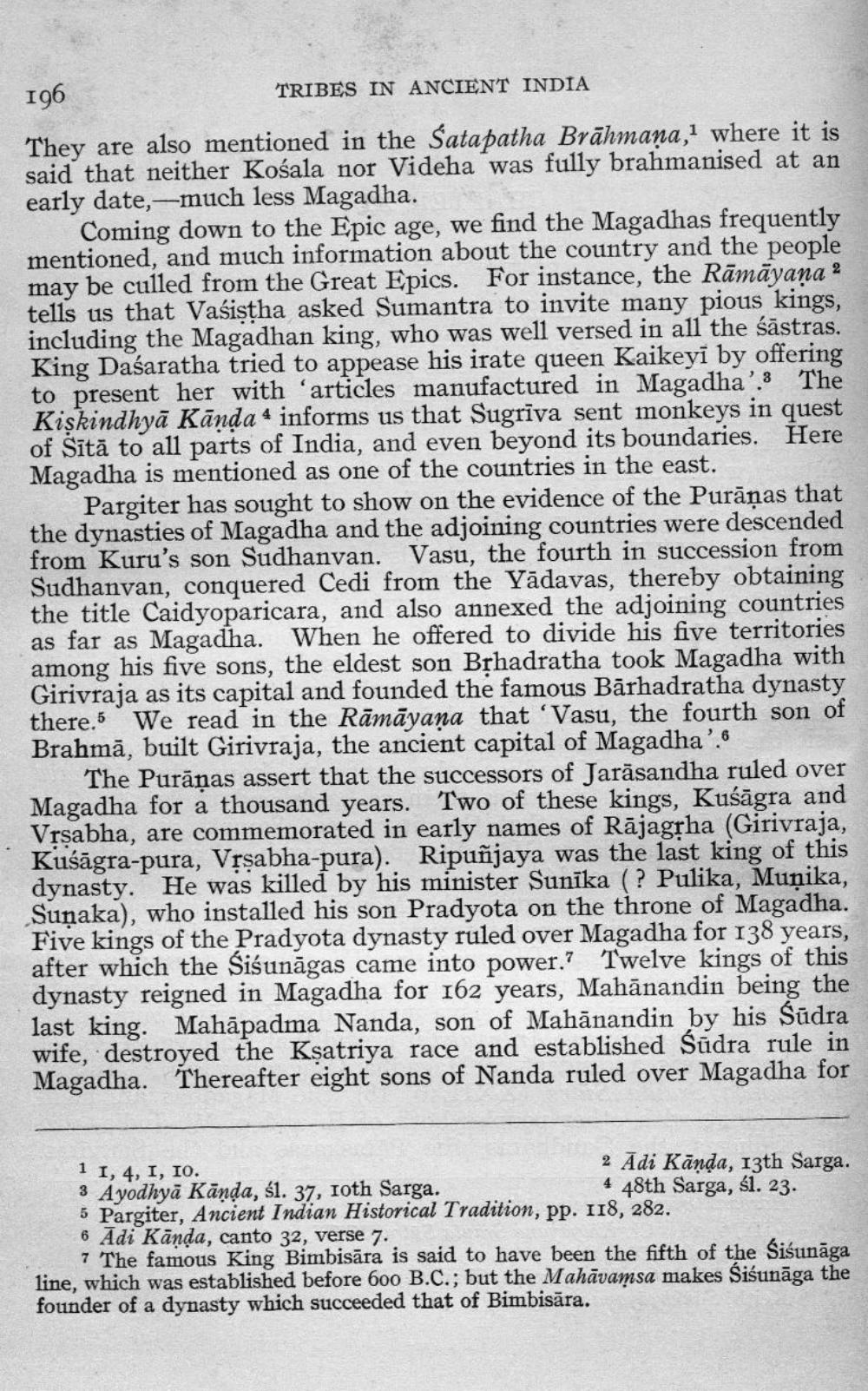________________
196
TRIBES IN ANCIENT INDIA They are also mentioned in the sata patha Brāhmaṇa,' where it is said that neither Kośala nor Videha was fully brahmanised at an early date, -much less Magadha.
Coming down to the Epic age, we find the Magadhas frequently mentioned, and much information about the country and the people may be culled from the Great Epics. For instance, the Rāmāyana 2 tells us that Vasistha asked Sumantra to invite many pious kings, including the Magadhan king, who was well versed in all the śāstras. King Daśaratha tried to appease his irate queen Kaikeyi by offering to present her with 'articles manufactured in Magadha'.The Kiskindhyā Kānda 4 informs us that Sugrīva sent monkeys in quest of Šītā to all parts of India, and even beyond its boundaries. Here Magadha is mentioned as one of the countries in the east.
Pargiter has sought to show on the evidence of the Purāṇas that the dynasties of Magadha and the adjoining countries were descended from Kuru's son Sudhanvan. Vasu, the fourth in succession from Sudhanvan, conquered Cedi from the Yādavas, thereby obtaining the title Caidyoparicara, and also annexed the adjoining countries as far as Magadha. When he offered to divide his five territories among his five sons, the eldest son BỊhadratha took Magadha with Girivraja as its capital and founded the famous Bārhadratha dynasty there. We read in the Rāmāyaṇa that ‘Vasu, the fourth son of Brahmā, built Girivraja, the ancient capital of Magadha'.6
The Purāṇas assert that the successors of Jarāsandha ruled over Magadha for a thousand years. Two of these kings, Kuśāgra and Vrsabha, are commemorated in early names of Rājagļha (Girivraja, Kuśāgra-pura, Vrsabha-pura). Ripuñjaya was the last king of this dynasty. He was killed by his minister Sunīka (? Pulika, Muņika, Sunaka), who installed his son Pradvota on the throne of Magadha. Five kings of the Pradyota dynasty ruled over Magadha for 138 years, after which the Sisunāgas came into power.? Twelve kings of this dynasty reigned in Magadha for 162 years, Mahānandin being the last king. Mahāpadma Nanda, son of Mahānandin by his Sūdra wife, destroyed the Ksatriya race and established Sūdra rule in Magadha. Thereafter eight sons of Nanda ruled over Magadha for
1 1, 4, I, IO.
2 Adi Kānda, 13th Sarga. 3 Ayodhyā Kānda, śl. 37, roth Sarga.
4 48th Sarga, śl. 23. 5 Pargiter, Ancient Indian Historical Tradition, pp. 118, 282. 6 Adi Kānda, canto 32, verse 7.
7 The famous King Bimbisāra is said to have been the fifth of the Siśunāga line, which was established before 600 B.C.; but the Mahāvamsa makes Siśunāga the founder of a dynasty which succeeded that of Bimbisāra.




